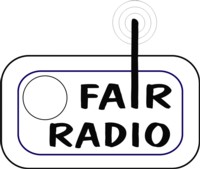Raga CDs of the Months (08/10): Dr. Gangubai Hangal – Voice of Tradition (biography)
Posted by ElJay Arem (IMC OnAir) on August 10, 2010
“Voice of Tradition – Dr. Gangubai Hangal” (a biographic radio show)
Dr. Gangubai Gangubai is a representative of North Indian Classics. This exceptional vocalist was “on air” beside important female representatives of North and South India in IMC OnAir’s radio show “Women in Indian Classics” (part 1).
The 1st anniversary day on 21st July during the annual summer break of IMC OnAir gives us some reason we like to dedicate in August a whole radio show to this outstanding artist who was called “Father of the Khayal” (mainly because of Gangubai’s androgynous voice).
dates of broadcasting…
17th August 2010 – 09:00 p.m. (MESTZ)
broadcasting plan | streaming (Internet Radio & Mobile Radio) | podCast
In the historical meaning we can see Gangubai as the most influential artist who helped women to the emancipation in Indian vocals. Beside four honorary doctorate Gangubai received in 1971 – at the age of 58 years – the Padma Bhushan, and lately in 2002 the Padma Vibhushan, the second highest civilian order of India. 2002 was also the year in which Gangubai was diagnosed of bone cancer she successfully overcame after three years treatment.
Gangubai was born 1913 in Karnataka, a South Indian Federal State. Gangubai originates from a simple family, whose earlier generations belonged to the Gangamats, the caste of agricultural boat people. In her early career Gangubai’s origin from this social milleu she was refused by the orthodox Brahmans. It wasn’t modern that a woman earns her living costs with arts. Although Gangubai’s father, Shri Nadgir and her husband, Shri Gururao Kaulgi likewise belonged to the caste of Brahmans in her family prevailed a consciousness that a woman is ‘Angavashtra’ (literally meaning: an additional article of clothing, which decorates subtle men as status symbol).
In 1928 the family of Gangubai moved 20 kilometres southeast, from Dharwad as the place of her birth to Hubli that time like today a commercial centre with approx. 1,5 million inhabitants. Hubli remained for Gangubai as the adopted home till her dying on 21st July 2009.
Sources (from left to right): with courtesy thank’s to indiasummary.com, Vikas Zutshi (Blogspot), Wikipedia.org, (1st row);
Eric Parker (Flickr), Hinduonnet.com, cbc.ca/daylife.com/Guardian.co.uk (2nd row)
Gangubai had at the age of 20 years in 1933 with a concert in Bombay (Mumbai) her artistic break-through. Relevant influence on the vocal qualities beside her musical talent had the strict training, which Gangubai received for 15 years from Pandit Rambhau Kundgolkar, in India known as Sawai Gandharv.
Sawai Gandharv, so reported Gangubai herself, taught her no more than four Ragas. But the training was very strict often practicing for hours monotonously single phrases. Her teacher followed the principle same how one should deal with money. Each note should be used as economically as possible. Gangubai remained always faithful to this rule during her 80 years long musician career. At the beginning she presented songs of light Indian classicals, Bhajans and Thumris. Later she focused completely to the Khayal, the modern singing style of North Indian classics. Khyal means “imagination”. This style developed from the Qawwali, from Sufi music with Muslim influence in the 17th century at the court of Mohammed Shah Rangile (1719-1748). The Khayal gives a musician free space for improvisation and possesses nevertheless a clear essential structure, either in the slow tempo, bada khyal or as chhota Khayl in a fast tempo.
Gangubai is well-known for she interpreted the Khayal in slow tempo, note for note which is the substantial characteristic of the Kirana Gharana, one of India’s music schools.
With her musical tools Gangubai could still give her last concert at the age of 93 on 12th March 2006. Although particularly from the loss of her daughter in 2004 she had to use a wheelchair and became in need of care for the last years of her impressive life.
On 17th May 2009, two months before their dying the “voice of the tradition” inaugurated the “Naryan Academy OF Hindustani Classical Music” in Hubli… and under the roof of the Hangal Music Foundation a national memorial award will honor artists with outstanding earnings/services for Indian Classical Music.
The Padmavibhushan Dr. Gangubai Hangal Memorial National Award will be assigned in 2010 to the outstanding singer Pandit Bhimsen Joshi (see right picture, 1st row). Bhimsen Joshi was introduced various times in IMC OnAir’s radio shows.
Khayal in Raag Bageshree (late night raga), quick tempo: Drut… see complete playlist.















Playlists 2010… « IMC – India meets Classic presents … said
[…] var _vodpod_config = {group_id:'imcradionet', show_ads:false, wordpress:true}; « Raga CDs of the Months (08/10): Dr. Gangubai Hangal – Voice of Tradition (biography) IMC OnAir’s Moderation Script – radio show of August 2010: Voice of Tradition […]
LikeLike
Raga CDs des Monats (11/10): KALPITA SANGITA – Kompositionen in der indischen Klassik. « IMC – India meets Classic presents … said
[…] Raga CDs of the Months (08/10): Dr. Gangubai Hangal – Voice of Tradition (biography) (http://radioblog.india-meets-classic.net) […]
LikeLike
Raga CDs of the Months (11/10): KALPITA SANGITA – Compositions in Indian Classics. « IMC – India meets Classic presents … said
[…] Raga CDs of the Months (08/10): Dr. Gangubai Hangal – Voice of Tradition (biography) (http://radioblog.india-meets-classic.net) […]
LikeLike